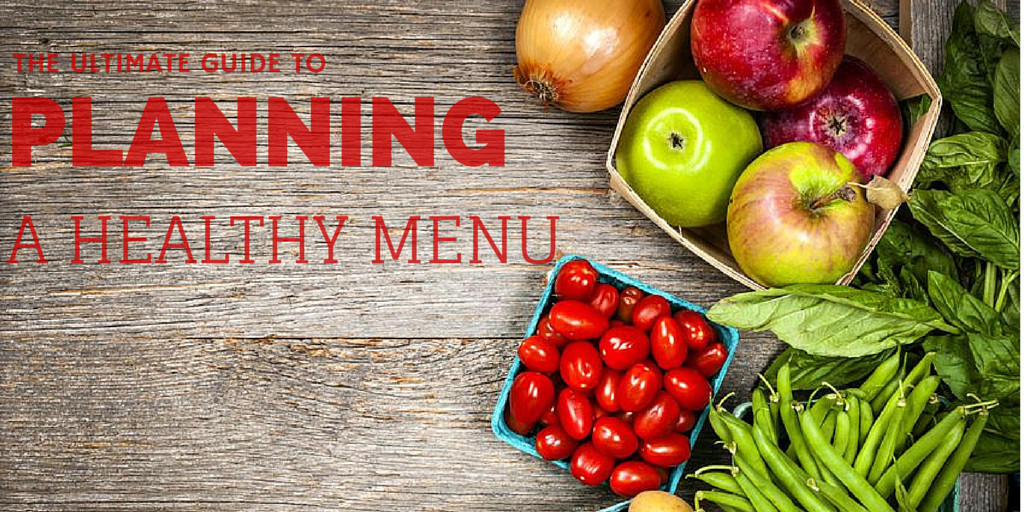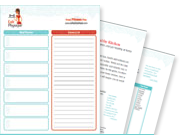We can do all of the physical activity in the world, but if we don’t sync our activity with a healthy diet, we’re not getting the full benefits of a healthy lifestyle. At the same time, we can spend hours preparing a family dinner, but if you didn’t start with whole, healthy ingredients – your family isn’t getting all of the potential benefits of a home cooked meal. What you put into your body at meal times directly affects how you do throughout the rest of the day. A healthy lifestyle starts with planning your weekly menu. In our new series: A Path To Healthier Eating, we’ll talk about how to jump start your healthy lifestyle with diet changes. First up – Menu Planning:
Start by looking at your current meal plan. Are you a fly-by-the-seat-of-your-pants type of eater? There are certainly times when emergency meals force us into fast food choices; but if you take a look at your schedule, chances are you can create time once a week for meal planning and prep. If you think that your diet is in need of some serious overhauling, make an appointment with a dietitian to see where you can improve your diet and how it’s affecting your overall wellness goals. A dietitian can help to identify strategies to reach your goals.
Take some time to create a week-long menu plan that involves a consistent set of healthy ingredients. For example, if you are making stuffed peppers one night, keep that in mind later when you need a snack for game night – use the leftover peppers in a fresh salsa or turn it into a stuffed pepper soup. Synergizing your ingredients makes for a shorter shopping list and more flexibility throughout the week.
Create a shopping list based on your menu for the week. When you shop intelligently, you won’t have to worry about coming home with boxes of Pop Tarts or (even worse) buying tons of fresh fruits and veggies that rot in the refrigerator before you have the chance to use them.
Tips for healthy menu planning:
- Keep to a small grocery list of similar healthy ingredients and use them throughout various recipes.
- Spend time each week (during your lunch break?) looking for fresh, new recipes. Browse Pinterest or sites like Tasteologie.
- Speaking of Pinterest, do you have a place to store all of your recipes? Keep a simple, organized collection that can be easily accessed from the grocery store or at work.
- Don’t forget to include your family in the planning process. It sounds obvious, but the people you share your meals with should have a say in what they might want to eat each week!
- Write down the menu on a calendar so everyone (including you) knows what is coming up. If you want to be an organization guru, use Google Calendar and include notes on each menu with links to recipes.
- Use general guidelines like Pasta Night, Soup Night, Mexican Night, etc. Following a guideline can help when you are stuck for inspiration.
- Prep your food when you get home from the grocery store.
- Glass jars keep fresh veggies fresher longer; so stock up on mason jars and store your chopped veggies in them.
- Stir fries, pizzas, and soups are great options for using a variety of leftover ingredients. Position these recipes at the end of the week when you have lots of random left-over ingredients.
- Don’t be afraid to freeze portioned meals for next week or even next month.
For help evaluating your current diet and direction on making better dietary decisions, schedule a consultation with a Café Physique dietitian. We can help you create a better eating plan based on your individual needs.


